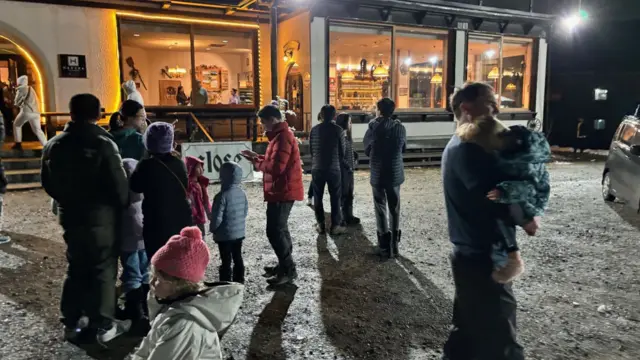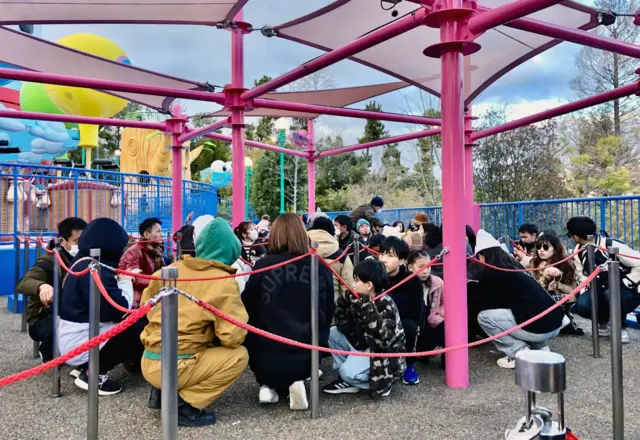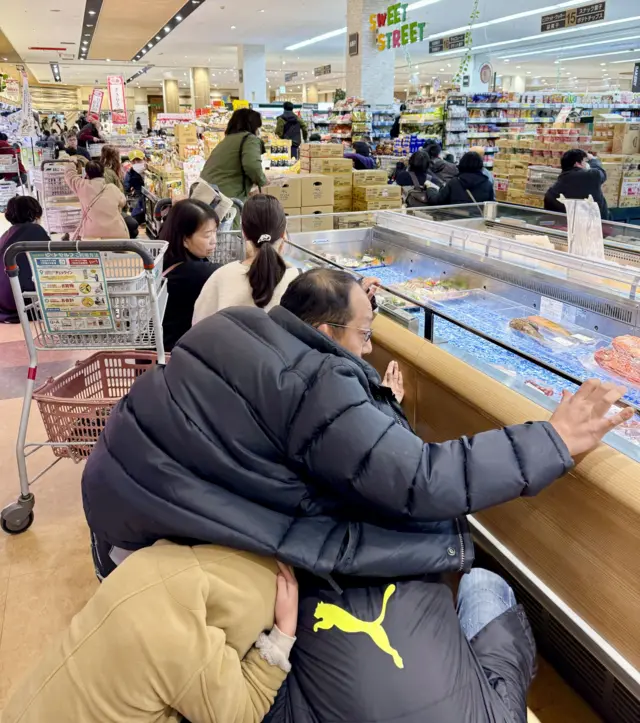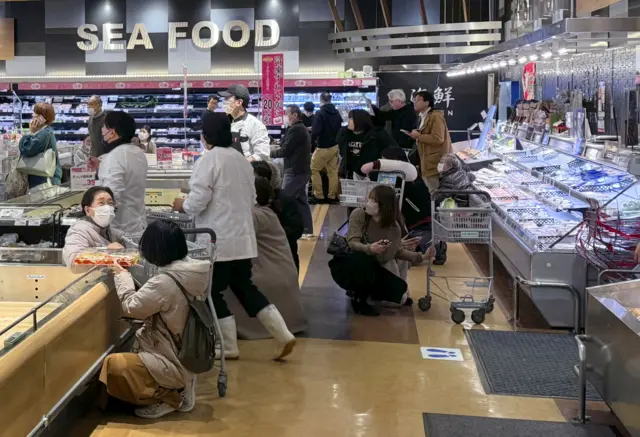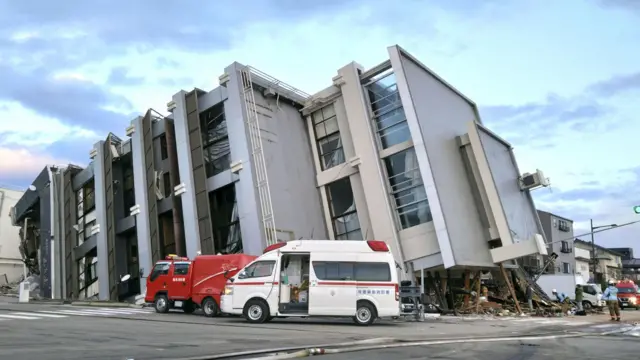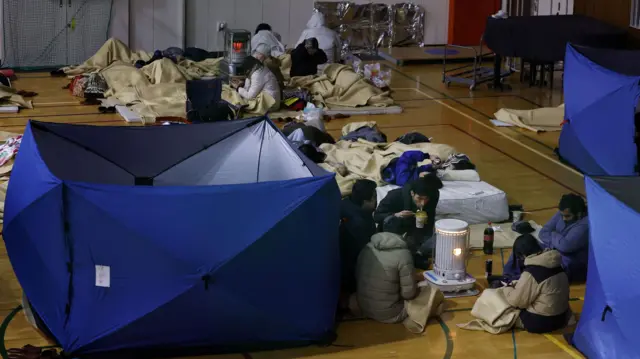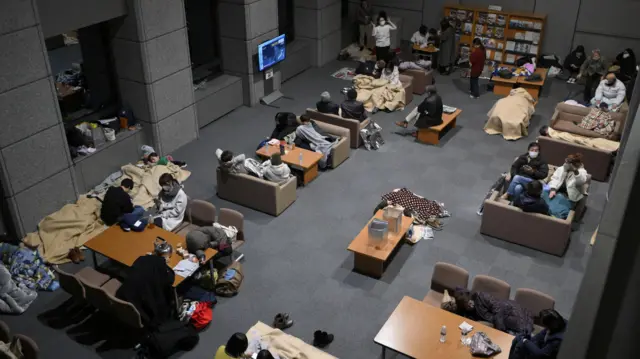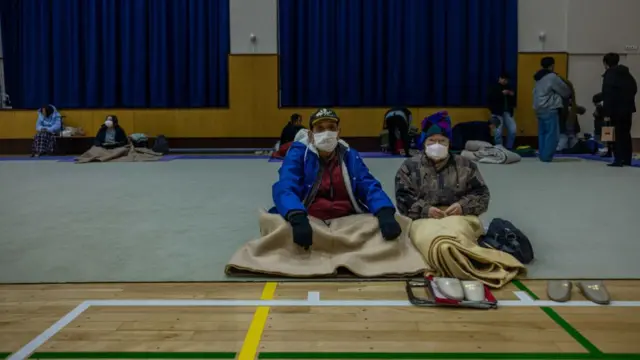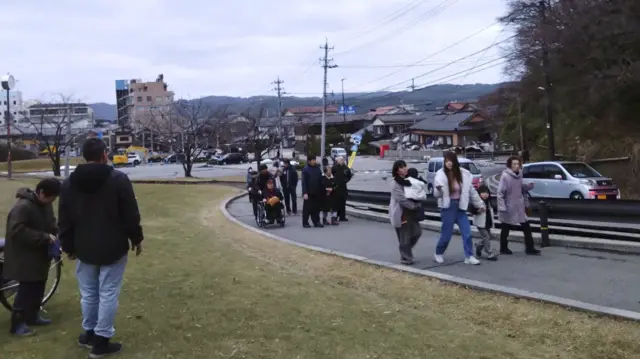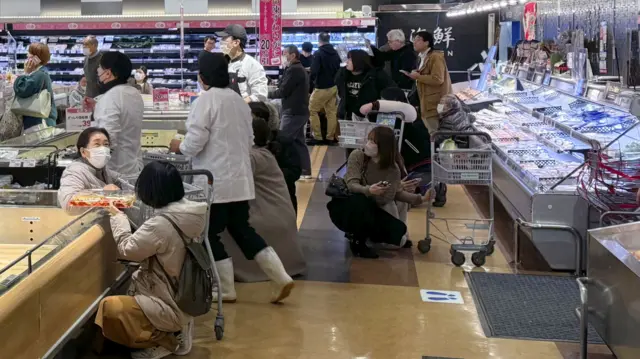Experiencing aftershocks while driving to the epicentrepublished at 01:52 GMT 2 January 2024
 Jean Mackenzie
Jean Mackenzie
Reporting from Noto, Japan
We have been driving through the night to reach the Noto peninsula on the west coast of Japan, where the earthquake struck. We are now travelling up to the epicentre in the northern tip, where the worst affected villages are.
We have just experienced a small earthquake while driving, which shook the steering wheel of our car. There have been a number of these aftershocks since the earthquake yesterday afternoon, with warnings of more to come.
So far, we have seen no obvious signs of damage, but have been passed by dozens of emergency vehicles with rescue teams on their way up to help look for survivors. There are long queues of cars at petrol stations waiting to fill up, and people are lining up at convenience stores, worried about running out of food and water.
It could take us some time to get to the damaged villages. Japan’s Prime Minister Fumio Kishida has warned that rescue workers may find it difficult to reach those trapped in their homes as some of the roads have been cut off, but has assured people help is on the way.
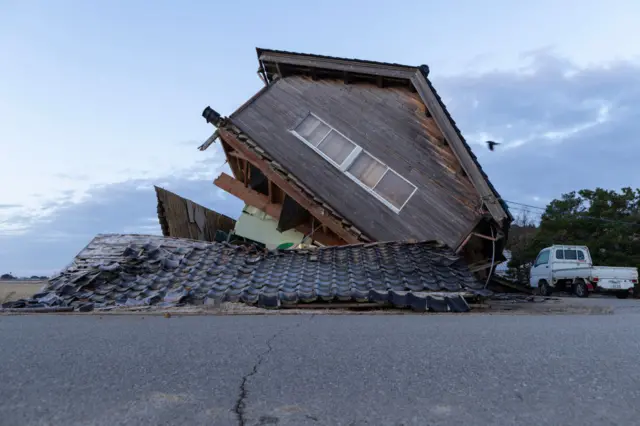 Image source, Getty Images
Image source, Getty Images